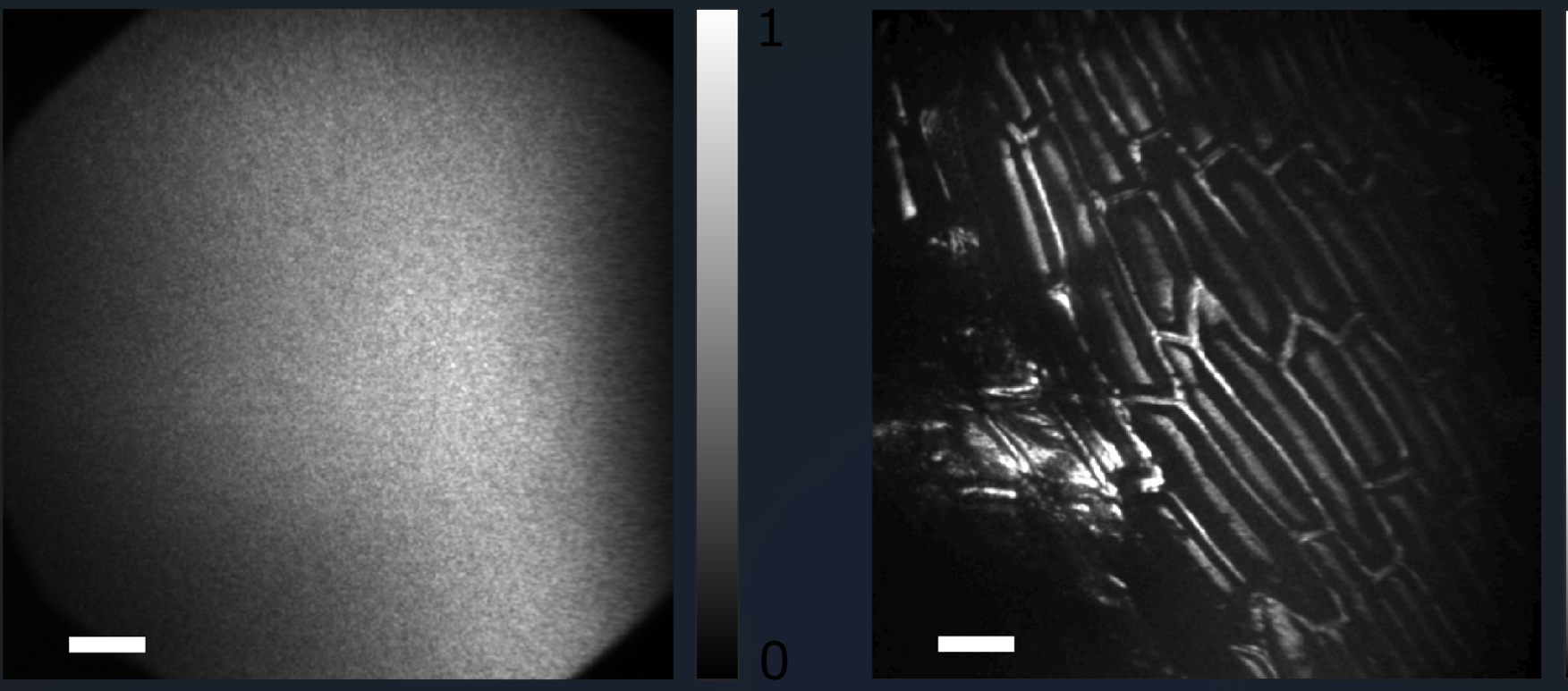
Hebrew University Researchers Introduce Image-Guided Computational Holographic Wavefront Shaping, Offering Fast and Versatile Solutions for Complex Imaging Challenges
New study introduces a novel computational holography-based method that enables high-resolution, non-invasive imaging through highly scattering media, without the need for traditional tools like guide stars or spatial light modulators. By leveraging computational optimisation, the method drastically reduces the number of measurements required and corrects over 190,000 scattered modes using just 25 holographic frames. This innovation shifts the imaging burden from physical hardware to flexible, scalable digital processing, allowing for faster, more efficient imaging across a wide range of fields, from medical diagnostics to autonomous navigation. Its importance lies in providing a versatile, non-invasive solution for overcoming complex scattering challenges, potentially transforming numerous applications in science and industry.
A groundbreaking study by researchers from the Institute of Applied Physics at the Hebrew University of Jerusalem, published in Nature Photonics, presents a revolutionary new method for non-invasive high-resolution imaging through highly scattering media. The team, led by Professor Ori Katz, Omri Haim and Jeremy Boger-Lombard, introduces a holography-based computational technique that addresses key challenges in the field of optical imaging and opens new doors for applications in diverse areas such as medical imaging, autonomous vehicles, and microscopy.
The study introduces a guide-star-free approach that eliminates the need for traditional tools such as high-resolution spatial light modulators (SLMs) or extensive measurements, making it possible to image through complex scattering media with unprecedented speed and precision. By computationally emulating wavefront shaping experiments, this new technique optimises multiple “virtual SLMs” simultaneously, allowing the system to reconstruct high-quality images without requiring prior information about the target or scattering patterns.
Key Achievements:
High Versatility and Flexibility: This method can correct over 190,000 scattered modes using only 25 holographically captured, scattered light fields obtained under unknown random illuminations. The new technique offers flexibility across various imaging modalities, including epi-illumination, multi-conjugate correction of scattering layers, and lensless endoscopy.
Reduced Computational and Memory Demands: Unlike conventional techniques that require the computation of entire reflection matrices, this innovative approach drastically reduces memory allocation and accelerates the imaging process, enabling faster and more effective correction of complex scattering.
Applications Across Fields: The study demonstrates the potential for this technique to be applied in diverse areas including biological tissue imaging, multi-core fiber endoscopy, and even acousto-optic tomography. The method also promises to offer solutions in areas such as geophysics, radar, and medical ultrasound.
“We are excited to introduce a new approach in imaging technology that allows for high-resolution imaging through highly scattering media with orders of magnitude less measurements than the state of the art, without the need for prior knowledge of the target or expensive equipment,” says Prof Ori Katz. “This innovation shifts the challenge from physical hardware to computational optimisation, offering a naturally parallelisable solution that can be applied across many fields.”
The research has the potential to transform key areas of scientific study and practical applications, offering a fast, non-invasive, and highly adaptable solution for imaging through complex environments. The team is already exploring future directions, including optimising the method for continuous volumetric samples such as thick biological tissues and further reducing the number of required holograms.
The research paper titled “Image-guided Computational Holographic Wavefront Shaping” is now available at Nature Photonics and can be accessed at https://www.nature.com/articles/s41566-024-01544-6
DOI: 10.1038/s41566-024-01544-6

Microscopic Imaging of Cells: Traditional and Novel Results
Microscopic image of cells in a conventional optical microscope (left) and the processed image with the new technique (right)
Credit: Omri Haim and Jeremy Boger-LombardFunding
This work has received funding from the European Re- search Council under the European Union’s Horizon 2020 Research and Innovation Pro- gram grant number 101002406. This research was supported by a scholarship sponsored by the Ministry of Innovation, Science & Technology, Israel.
The Hebrew University of Jerusalem is Israel’s premier academic and research institution. With over 23,000 students from 90 countries, it is a hub for advancing scientific knowledge and holds a significant role in Israel’s civilian scientific research output, accounting for nearly 40% of it and has registered over 11,000 patents. The university’s faculty and alumni have earned eight Nobel Prizes, two Turing Awards a Fields Medal, underscoring their contributions to ground-breaking discoveries. In the global arena, the Hebrew University ranks 81st according to the Shanghai Ranking. To learn more about the university’s academic programs, research initiatives, and achievements, visit the official website at http://new.huji.ac.il/en
